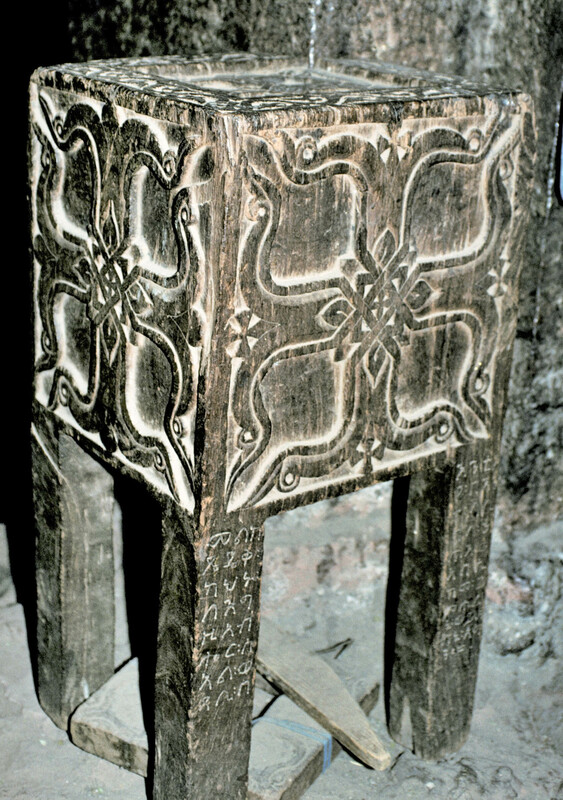Ark of Melchizedek
Type:
Boxes
Date:
late twelfth to first third of thirteenth century
Location or Findspot (Modern-Day Country):
Ethiopia
Medium:
Wood
Dimensions:
72 × 33 × 36 cm
Description:
This wooden altar is from the Lalibela complex in Ethiopia. It once held a tabot, which in Ge'ez (the language of the Ethiopian church) refers to the Ark of the Covenant, the container made to protect the Tablets of the Law (the Ten Commandments) that God gave to Moses on Mount Sinai. According to a fourteenth-century Ethiopian epic, the Ark of the Covenant flew from Jerusalem to Ethiopia after destruction of the Temple in 70 CE.
The inscription on this altar names the biblical Melchizedek, who offered bread and wine to Abraham, the Jewish patriarch. Christians saw Melchizedek as a type of Jesus (who offered bread and wine as his body and blood) and model for subsequent Christian priests performing the eucharistic liturgy. The altar's dedication to Melchizedek and the connection between tabots and the Ark of the Covenant helped Ethiopian Christians see themselves as privileged inheritors of biblical traditions.
The inscription on this altar names the biblical Melchizedek, who offered bread and wine to Abraham, the Jewish patriarch. Christians saw Melchizedek as a type of Jesus (who offered bread and wine as his body and blood) and model for subsequent Christian priests performing the eucharistic liturgy. The altar's dedication to Melchizedek and the connection between tabots and the Ark of the Covenant helped Ethiopian Christians see themselves as privileged inheritors of biblical traditions.
Relevant Textbook Chapter(s):
Introduction,
8
Image Credits:
Michael Gervers

